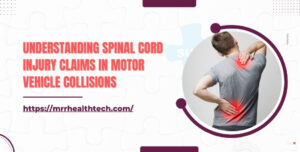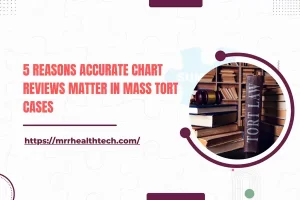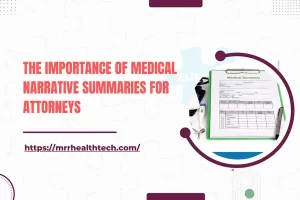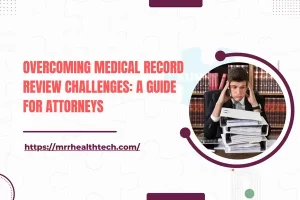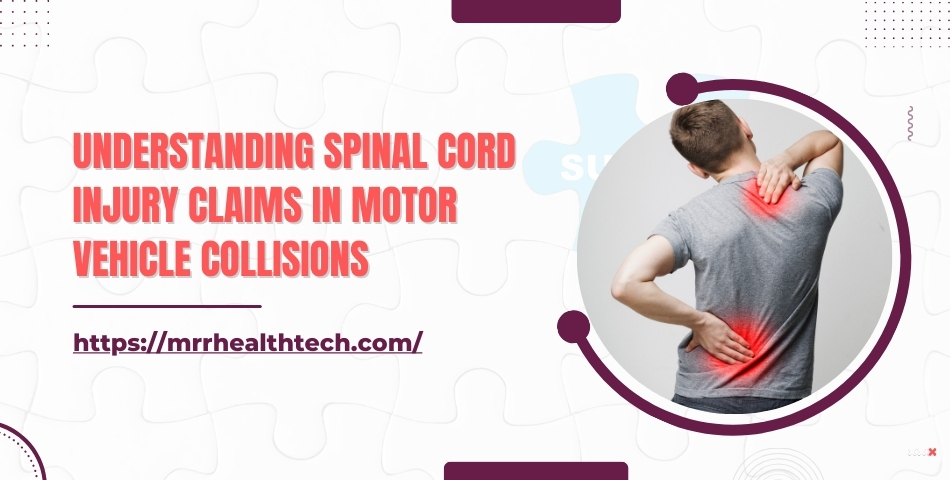
Introduction
In what follows, this article examines the reasons for the high occurrence of SCIs within MVCs, highlights many associated statistics, and attempts to explain, how medical records might prove useful to attorneys in constructing effective cases for their clients.
Motor vehicle collisions (MVCs) are the primary contributor of spinal cord injuries (SCIs) within the United States, causing severe harm to victims and their relatives. In the course of pursuing legalities surrounding personal injury, it helps to comprehend the various aspects of SCIs.
The Prevalence of Spinal Cord Injuries in Motor Vehicle Collisions
1.1 Understanding Spinal Cord Injuries
Spinal cord injury is the damage that results when the spinal cord, or a nerve that extends from the spinal cord, is injured. This damage leads to changes that may be permanent in relation to strength, sensation and other body functions below the level of the injury.
1.2 Statistics on SCIs from MVCs
In accordance with data provided by the National Spinal Cord Injury Statistical Center (NSCISC), motor vehicle accidents are responsible for approximately 38% of all SCIs. This alarming statistic illustrates the safety and preventive aspects that need to be addressed in road usage. Currently and in 2024, the most recent reports show that SCIs from MVCs scenario increased incidence by 5 % as compared to last year’s figures thereby indicating a driving risk.
1.3 Risk Factors for SCIs in MVCs
The injury can be caused by several factors and includes the following aspects during a motor vehicle collision involving an SCI:
- High-speed collisions: There is an increasing tendency that the impact will be greater with the higher the speed of the vehicles involved.
- Driver: Distracted driving or alcohol and drugs abuse aggravates the circumstances of damage.
- Type of Vehicle owned: The tendency is that the larger the vehicle, the more severe an injury the occupants of the smaller vehicle suffer.
Mechanisms of Injury in Motor Vehicle Collisions
2.1 Types of Spinal Cord Injuries
SCIs can be categorized into two general types:
• Complete Injury: this type is marked by total functional loss, which is experienced below the affected level of injury.
• Incomplete Injury: This type rests with the ability or sensation which may exist lower the level of injury.
2.2 Common Mechanisms Leading to SCIs
The mechanisms of injury in MVCs can vary, but common causes include:
• Flexion/Extension Injuries: The head shifting rapidly forward or backward to a great distance incurs chances of cerebromalacia.
• Axial Loading: Compression of the spinal cord is a result of vertical forces, such as those applied during a fall and collision.
• Lateral Forces: Movements of a body part relative to another can be brought about by outside forces applied to the surface.
The Role of Medical Records Review in Legal Cases
3.1 Importance for Attorneys
For legal professionals representing clients with SCIs, medical records review is essential. It provides a comprehensive understanding of the injury, treatment history, and long-term implications, which can significantly influence case outcomes.
3.2 How Medical Records Review Works
Medical record review involves:
- Collecting Records: Gathering all relevant medical documentation related to the injury.
- Analyzing Data: Reviewing the records for inconsistencies, treatment protocols, and prognosis.
- Expert Consultation: Engaging with medical experts to interpret findings and provide testimony if needed.
3.3 Benefits of Medical Records Review
• Strengthening Cases: Attorneys may find additional crucial information that supports the client’s case.
• Proving Negligence: This assists the attorneys to determine who is at fault by cross-referencing the medical evidence with the accident situation.
• Estimation of Damages: Shows some factors that can be used to estimate the damage based on expenses incurred for medical attention, rehabilitation, and other forms of advanced care.
Legal Implications of Spinal Cord Injuries
4.1 Compensation for Victims
Victims of SCIs in MVCs may be entitled to various types of compensation, including:
- Medical Expenses: It includes costs which can be used in previous or upcoming therapy.
- Lost Wages: This is recoverable loss in respect of payment because work was impossible for the victim.
- Pain and Suffering: Weeping for damages due to emotional distress, negative quality of life due to such anxiety, pains and suffering.
4.2 Case Studies
Case Study 1: John Accident
Overview: John A, age 35 suffered a complete SCI as a result of a high velocity impact during a collision accident.
Challenges: The defendant claimed that John was the more negligent driver and was also partly liable being the speeding driver.
Solutions: The thorough review of John’s medical records revealed the nature of his wounds and the nature of medical help sought immediately.
Case Study 2: Jane Smith’s Incident
Overview: Jane Smith is 28 years old woman who sustained an incomplete SCI after a motor vehicle collision from behind while she was at a traffic light intersection.
Challenges: The insurance firm disputed the nature and extent of her injuries claiming such in her account were over-exaggerated.
Solutions: The thorough analysis of her medical records allowed her attorney to put together a coherent picture of the timeline of events commencing with the treatment.
Conclusion
Injuries to the spinal cord in automobile accidents pose considerable burdens not only to the victims but also to their families. In these cases, it is crucial to comprehend the nature of these injuries and the value it gives to the medical records review, as it is vital for building of great cases. This article seeks to address the shortcomings of existing content and offer information that is pertinent, useful and practical to lawyers in the course of pursuing justice for their clients.

